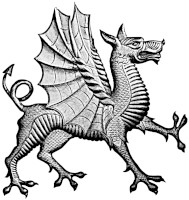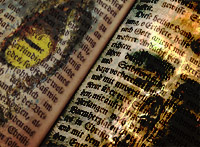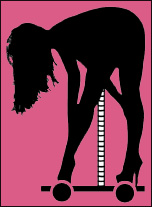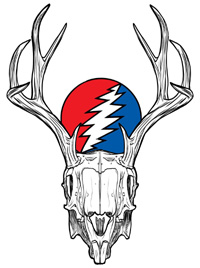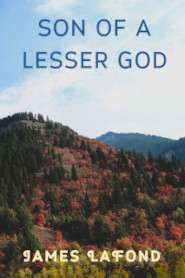Having just read the gutless Wikipedia definition of slavery, which includes debt bondage slavery but fails to define the income tax or military service as a type of debt bondage, I have returned to the ancients, who—through their relationships with the natural world and domesticated animals—saw themselves for what they were, beasts of burden, chattel, animals on a tax farm.
Indeed, the oldest pastoral analogy to the king and his kingdom was the shepherd and his flock. This is the best possible analogy for the nation state as slave farm. While chattel and industrial slavery in its worst forms more resembled the keeping of pigs in a pen or lab rats in a cage, shepherding is a more sustainable form of domestication, and the life of the domestic sheep closely parallels the life of the civilized human. The animals are simply permitted to live as they would with a few added perks, the guidance of the shepherd—who is more intelligent—and the protection of the sheep dogs. At a given time the animal is relieved of what it does not need, and is set on its way. There is the dark side though; the taking of the young and the old among these. Against these perils is the specter of the wolf, who would be the cause of young and old sheep disappearing if not for the master.
The ancients knew it was a sham game, a cruel hoax, a protection racket, so named their benevolent God—when they finally got one that cared—The Good Shepherd in vain hopes that their rulers would try and live up to that image. The shepherd and his dogs are so obviously analogous to the king and his men that it is a testament to our current ignorance that the notion now sees so novel.
Warrior versus Soldier
If asked to define slavery in a word today, I could have only one answer: civilization.
The evidence is in every history book. The entire march of civilization from Sumer and Egypt to Nigeria and Iraq has been a war between the ‘wolves’ in the form of the tribal warrior and the ‘dogs’ in the form of the civilized soldier whose task it is to eradicate them on behalf of the State. It has been a 10,000 year long battle that has seen the extinction of thousands of tribes at the hands of the monotribe of civilization.
Until the industrial age civilization was represented by small pockets of intensive agriculture and the majority of the world lived in natural circumstances, analogous to the lives of the wild animals. All primal warrior societies revered the animal powers. Lions remaining on the crests of European royal houses, the defiant American eagle and snake, the wolf headdresses of Roman velites and the lion cloaks of Roman Signifiers, all attest to an age old obsession with the emulation of animal virtues that has still not been eradicated. Even the malevolent lamb-eating shepherd treasures his wolf pelt.
Unlike us moderns who see only men and monsters, the primitive person—and to a lesser extent the ancient farmer and tender of livestock—was conditioned since the dawn of our kind to appreciate his lot in the light of the animal experience. With the rise of intensive settled agricultural the first shepherds were priest-kings, clothed in symbolic vestments often of trophy animals, who enslaved the minds of his less intelligent fellow by domesticating the mental image of the world of the animal powers.
The wisdom of life that was there to be acquired by any vision questing youth or man was contained, trapped, chained in the image of an idol, with every man’s potential spiritual awakening diverted to slavish cults. The world was no longer a wilderness to be explored, but a garden to be tended. Man was no longer a cousin to the four-legs, the fliers, the swimmers, but was a purpose built golum of a gardener to tend his master’s fields and drive his beasts.
The snake—incidentally—is generally associated with wisdom in pre-servile spiritual traditions.
Just as man shared the fate of animal under the animal powers, he shared his enslavement or eradication once shackled to the seeded earth. The Romans never forget this lesson and never tired of teaching it. A man’s world had been reduced to that space over which he previously journeyed in a day, a world of fewer nuances and variations, of a few obedient animal types against his ancestors’ many wild types. Civilized man became less intelligent and more easily managed, all the while fancying himself superior to the barbarians, as if a dog was superior to a wolf for being able to respond to a command.
However, we have never lost our affinity for animals. The multitude of pets we keep is evidence enough. Likewise, animal metaphors inspire the story teller, such as Robert E. Howard, who, in every Conan yarn, likens the dynamic direct action hero to the wolf, the tiger, the panther or the lion, while he always compares the soft, prevaricating and dishonorable civilized foes of his barbarian protagonist with the dog. Many a Conan story is a tale of warrior versus soldier.
A warrior is acting according to his nature, for his kind, his family, his clan, his tribe, and most of all according to the honor code of his masculine society.
A soldier is always a slave. A military establishment always has absolute power of life and death over its soldiers—always. That power is what makes it the awesome machine it is.
When my father in law was taken by U.S. Army recruiters from his high school classroom and ‘conscripted’ into the war machine in 1944, he was enslaved. The ancients understood terms of enslavement. We, having been weaned solely on the guilty gray tit of Southern American Antebellum chattel slavery, are ill-prepared to regard any type of forced servitude—resulting in death or insanity or not—as slavery unless it is for a life term, for in our shallow domesticated minds, any enslavement that is not for life is simply a facet of our brilliantly bizarre sense of freedom.
When my brother joined the army in 1982 he sold himself into slavery for six years.
When Marsden, a friend of mine, hired on as a military contractor in Black Water Virginia in 2004, he rented himself as a slave.
As you can see, our masters are evolving, returning to the free range wisdom of the shepherd over the grinding lot of the manager of a cattle yard, as a less expensive and labor intensive task that produces healthier and more viable servants.
The only wolves remaining out their today are the criminals cultivated by our master’s pro-crime policies, and the Islamist Jihadists, who are not enslaved, enlisted, or contracted like our civilized soldiers. A force sustained only by an ethos will keep the field longer—even if overmatched—than a force managed into place through force, enticement and contract.
It is an object of fascination that defiant, violent tribalism has still not been eradicated by the world machine.
The Folk Tale
It is no accident that traditional folklore focused so much on animals. When Aesop, a slave who lived on the isle of Lesbos when Lesbos was the place to be and was home to the equivalent of our biggest pop star, wished to tell morality tales, he cloaked them in animal wisdom. We have no idea where he was captured. Perhaps he was a primitive, perhaps a shaman? Maybe he was just a boy inspired by his captivity among animals.
The point is Aesop, in telling animal stories, could claim to be telling children’s tales, similarly to how a modern novelist might be claiming to write a horror story but in reality be writing about our corrupt government. Since the animal has devolved into the monster in the civilized mind, such stories are now zombie stories, or vampire stories. Aesop may have gotten away with making fun of his master’s moral vacuity, but there was a type of slave master on the horizon that would not be fooled by animal stories, indeed, would not be vexed by the wild.
War on Warriors
Rome was the best purpose-built slave driving device ever imagined. Rome’s virtue was that it did not pretend to be something it was not. Rome was evil, and knew it. Knowing what you are gives you an understanding of your strengths, which instills a clear need to maintain them. For 800 years a small professional army enabled the rule of tens of millions of slaves. Rome easily ate a billion souls.
As with all chattel slave societies—particularly at the industrial scale—every Roman was a slave. Caesar was a slave to Rome as surely as the lowest plebe was. Few men of the ancient world wore the imperial purple of Rome without being consumed by the office. Those few who avoided this fate, such as Nerva, deserve study.
For nearly 800 years from the 4th Century B.C. to the 5th Century A.D. warriors—the gladiator being a warrior slave—were set to slaughter one another in the sands at the base of the tiered amphitheatres. These were not arenas. The arena was the sand. The first gladiators were captured tribal enemies. Eventually extinct tribal enemies would be immortalized by professional classes of gladiators trained to duel in the obsolete weaponry and harness. The match making was such that very few gladiators attained stardom, and were then retired, which was a good deal for the gladiator as well as the emperor, who had a vested interest in showing the futility of striving against a machine.
In later ages, when Britain ruled the world, many an Englishman would have some savage relic—a scalp, spear, oar, shrunken head—displayed in his drawing room to show the pride he took in his nation’s worldwide dominance.
The modern American watches movies about our superheroes and war fighters and their death machines obliterating enemies as part of a similar impulse.
But the ancient Roman, he saw the real raw deal; death in the afternoon paces away; a far better man than he or anyone he knew squirting blood from his neck as he died at the hands of a fellow warrior slave. The gladiator was the ultimate domestic animal, a human sacrifice reenacting the futility of fighting the system that was Rome.
War on The Natural World
The most striking thing to the modern viewer, if he could go back in time to the Roman munera [rites due the dead—they did not call them ‘games’] was that the one spectacle that the commoners most loved was the animal hunts. These were civilized city dwellers who were so poor they ate only bread and ass. To such a city person a wild animal is a monster, especially a predator.
Rome did not just want to rule men, but the world. Every barbarian tribe would die or become Roman—demonstrating a proto-global mentality long before the technology was available. Ironically enough Archimedes and other Greek scientists had invented advanced machinery in toy form that was never developed beyond religious props and curiosities, because the system was so dedicated to actual man power, and was so awash with slaves, that developing industrial capacity made no sense. Rome was a muscle-powered machine of unmatched brutality, the society our historians and politicians and lawyers have worshipped and emulated for hundreds of years.
The only time the poor Roman got to eat meat was when an exotic animal was killed in the sacred animal hunts. The meat was portioned out to the spectators, with many of the animals having dined on people at the punishments. My favorite event was when one nut bag emperor—I forget who—matched 400 of his guards against 400 tigers! What a mess that had to be. The Romans were systematically destroying the natural world—every animal hunt a demonstration of the Emperor’s power to bring the most fearsome beasts from a world away, leaving no doubt that he could have your scrawny bread-fed ass hunted down at the snap of a finger.
Into this gory mess—according to two Roman Historians—was thrown an escaped Greek slave named Androcles, in about A.D. 50. Androcles could be translated as Manly-honor or Man’s-honor. Finally caught after years on the lamb—no pun intended but accepted—Androcles is set before a lion, that turns out to be the lion he had nursed back to health in the wild. Of course the people loved this Aesop’s tale come true and the Emperor let Androcles and the lion free. Supposedly the man and beast lived together as friends, not as master and pet.
I am inclined to think this story was not a factual account, but an allegorical tale by a certain Apion trying to influence virtue among the ruling class by an appeal to the animal powers. I see the later story of Beowulf along these lines; decrying a society of men emasculated at the foot of a slave master by evoking the animals that the forefathers of every tribe had faced in deep dark places. It would only be a matter of time before the untamed men from beyond the world of slave and master crashed down the gates of Civilization and brought down the good with the bad.
A Blood Smeared Mirror
Today there are venues where primal masculine values remain to offer an alternative to the slave and master ethos that most of our men, and virtually all of our women, have bought into.
1. The most potent—and to me the most distasteful—is the Jihadist. I treasure the tales of the colonial Jihadists and the medieval Jihadists, and have even written one myself. But the postmodern variety has taken on much of the nihilism of the slave society he seeks to bring down, making him a likely counterpart to the Germanic barbarian of the later Roman age, rather than a primal cleanser for a corrupt society.
2. The criminal gang member is the primary carrier of masculine values in urban settings, with an unfortunate propensity to be corrupted by the worst materialistic aspects of the society he is rebelling against.
3. Law enforcement has been a masculine stronghold until the past year. I think the Bad Shepherd’s dogs are about to be neutered.
4. The military is home to our most masculine men, who also abide by a cohesive warrior ethos, which, in and of itself is a rebellion against soldiering. In order to be effective in the current and future unconventional wars the military has to permit a warrior ethos. Unfortunately, these men are being hired as they exit the military to supplement law enforcement in a way that, to some views, hints at an expansion of the State, which is to say the power of the slave masters.
5. There are tens of thousands of masculine fraternities centered around sports, a preservation of manhood values, and other concerns that generally run counter to the cultivation of a completely emasculated society.
Somewhere in those five walks of life, I’d like to think, is our Androcles. But will there be a lion left for him to befriend?
References
link › en.wikipedia.org/wiki/Aesop
link › en.wikipedia.org/wiki/Nerva


